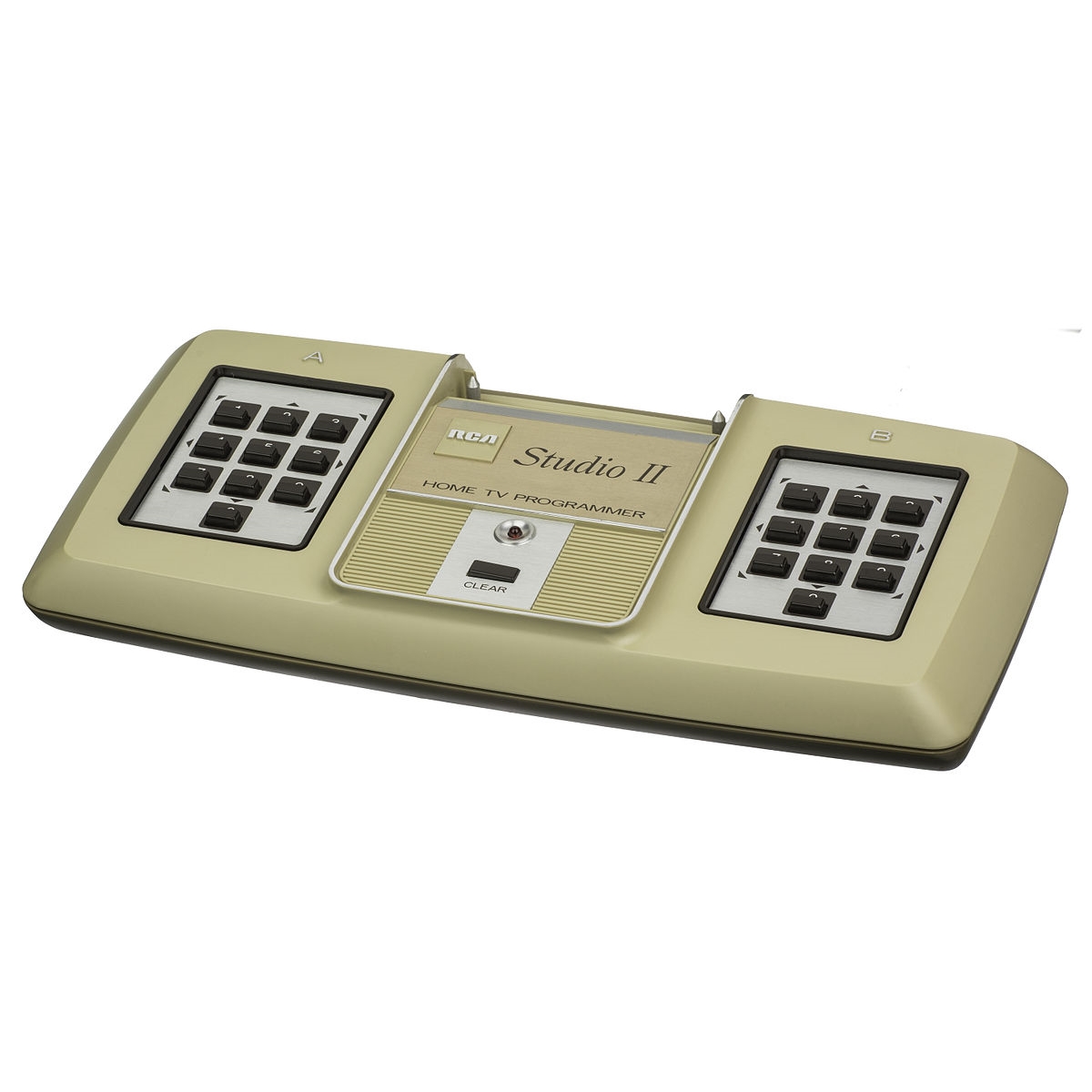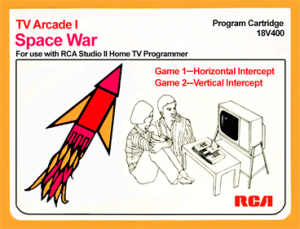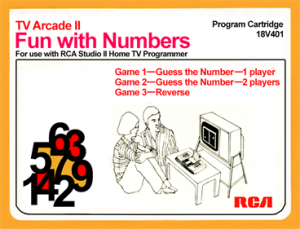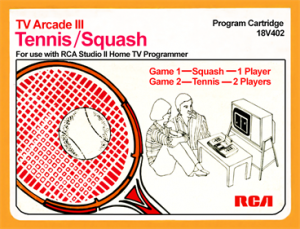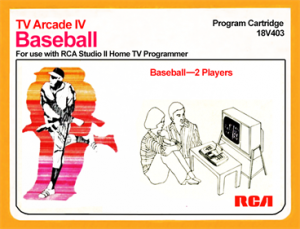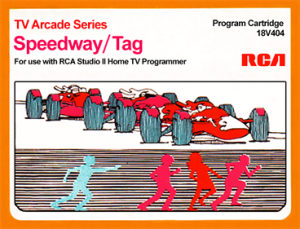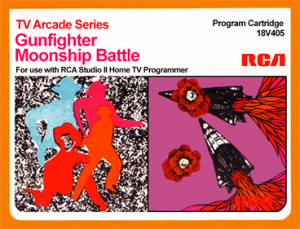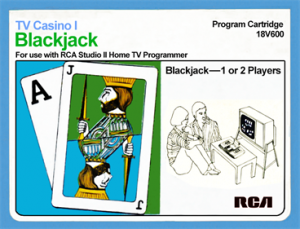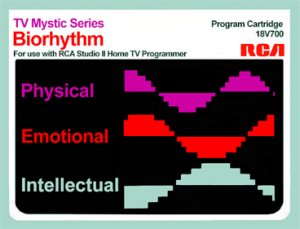|
History
The story of the RCA Studio II start with Joseph Weisbecker, an engineer for RCA. In the 60s, Weisbecker was trying to convince RCA to enter the personal computer segment, while RCA was in the mainframe business. Weisbecker knew he needed a working prototype in order to have a chance to convince RCA management to invest in such a market. As such, in its own free time, he decided to build a computer using off the shelves part and named it FRED for Flexible Recreation and Educational Device. Joseph wanted to present its creation to RCA, but needed the right approach. Jerry Herzog, a fellow colleague from RCA, decided to help Weisbecker turn FRED (renamed system 00) into a microprocessor as they thought it would be the best way to convince RCA to invest in the project. RCA took notice of the system 00 design and invited both men to join the Solid State Division of RCA to continue their research there.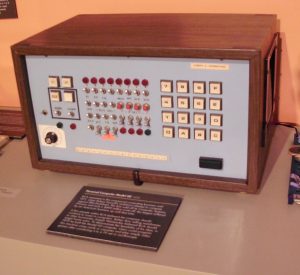
Joseph Weisbecker continue developing new version of FRED on its own, adding new features such as a light gun, cassette player and a smaller form factor. Once in a while, RCA would allow him to bring his new creation to the research facility so that other engineers could also work on them. The engineers finally manage to convert the System 00 in 2 chips. From there, Weisbecker created the final version of the FRED prototype, dubbed FRED 2. The design document shows that Weisbecker played with various ideas such as a modem and storage of data on vinyl, cassette and ROM RCA decided to use FRED 2 to develop an arcade cabinet. Dubbed FREDOTRONIC, the cabinets were using interchangeable games and were some of the first arcade to use microprocessors. Five games were created to be used in the arcade: Mines, Chase II, Computer Bowling, Swords and Scramble-Split Seconds. Sadly, after deploying the arcade in a test market, the reception was not good and RCA decided to pull the plug of this venture.
In 1976, Joseph Weisbecker decided to pitch the idea to RCA to develop a home console video game system. RCA hired Any Modla to program the games. RCA also bought games from Joyce Weisbecker, Joseph Weisbecker daughter how had developed games using the FRED prototype they had at home. With this transaction, she became the first female professional game developer. RCA already knew the shortcoming of its system. It was black and white, the graphics were a bit crude and it didn’t have detachable controllers. RCA had plans to correct theses flaws in a future release, thinking that what they had was good enough to enter the market as is.
Release
The first prototype was ready in March 1976. Dubbed the Videomate, the system was planned to be released before the Christmas holiday of 1976, but delay with the FCC pushed the released to February 1977.
This time, the reception was positive in the test market and RCA decide to proceed with a countrywide released in April. The system was delivered with 5 built-in games: Freeway, Addition, Bowling, Patterns and Doodles.
Production was made on a human intensive assembly line of 125 or so mostly women. Chips were hand inserted, as were discrete components. Everything was wave soldered except a few wires. Production rates were 1,000 units a day on a single shift. Three or four adjustments/troubleshoot stations were in the line for rough testing of the RF components. The tests were made through a test program cartridge that put different patterns on the screen, tested the keys, beeper, expansion slot. RF output levels were verified on a final test station using a Boonton RF power meter.
A bit later, the production of cartridges started in the same facility at a rate of 3,000 units per day.
The system continues to receive good reviews, but the sales were still sluggish. Units piled up in the warehouse and never did sell briskly, as the competitor already had color video game console with detachable joystick.
During this time, RCA continue working on the RCA Studio III, an improved version of the RCA Studio II. The new version had better graphics, color capabilities and a better sound, while remaining backward compatible with the previous version. Some of the later games released for the Studio II such as Biorhythm and Math fun were actually RCA Studio III games.
With the Studio III almost ready to go, RCA even start to work on the RCA Studio IV an intermediate home PC and the RCA Studio V, a full-fledged computer. 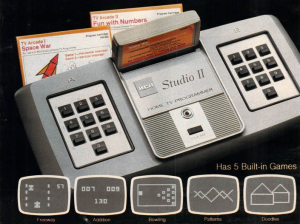
Demise
Although the owner of the RCA Studio II was loving their console, the device was not very popular. Units were piling up in inventory and RCA decided to offer units to employees at a discount. After a disastrous Christmas season, RCA decided to pull the plug on the console development and sold their remaining stock to Radio Shack for 10 cents on the dollars. Radio Shack sold the RCA Studio II at a discount prices and even sold the necessary hardware to build a programming cartridge for the device. At this point, the RCA Studio II had sold less than 64,000 units.
In April 1978, a ray of hope for the RCA Studio line happens when RCA decided to license the right to the RCA Studio III hardware and games to the Conic group, a Hong-Kong based electronic giant. The deal included all the games released for the RCA Studio II plus Bingo, Star Wars, Concentration Match and Pinball.
Games
10 games were officially released for the RCA Studio II in cartridges format (this exudes the 5 built-in games). Other cartridges were released on other countries based on the RCA Studio III hardware. An eleventh game called TV Casino Series: TV Bingo was also found in the wild. We never found any indication that these games were ever released. With only 2 copies found, this is highly likely that this cartridge was either a prototype or an early production copy, but that the system was cancelled before it was released.
Additional Cartridges
Although not commercial available, the following cartridges also exist:
- TV Bingo: Unreleased Bingo game, but some copies do exist. The game was finally released as a RCA Studio III cartridge,
- Demonstration Cartridge: Used in store to display the system capabilities.
- Test Cartridge: Used by RCA to test the system coming out of the production line.
- Prototype cartridges also exist.
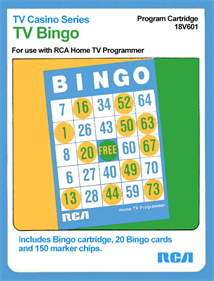 | 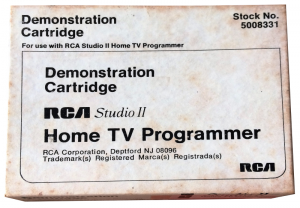 |  | |||
| TV Casino Series: TV Bingo 18V601 | Demonstration Cartridge Stock No. 5008331 | Test Cartridge |
Built-in Games
The system
- Addition
- Bowling
- Doodle
- Freeway
- Patterns

